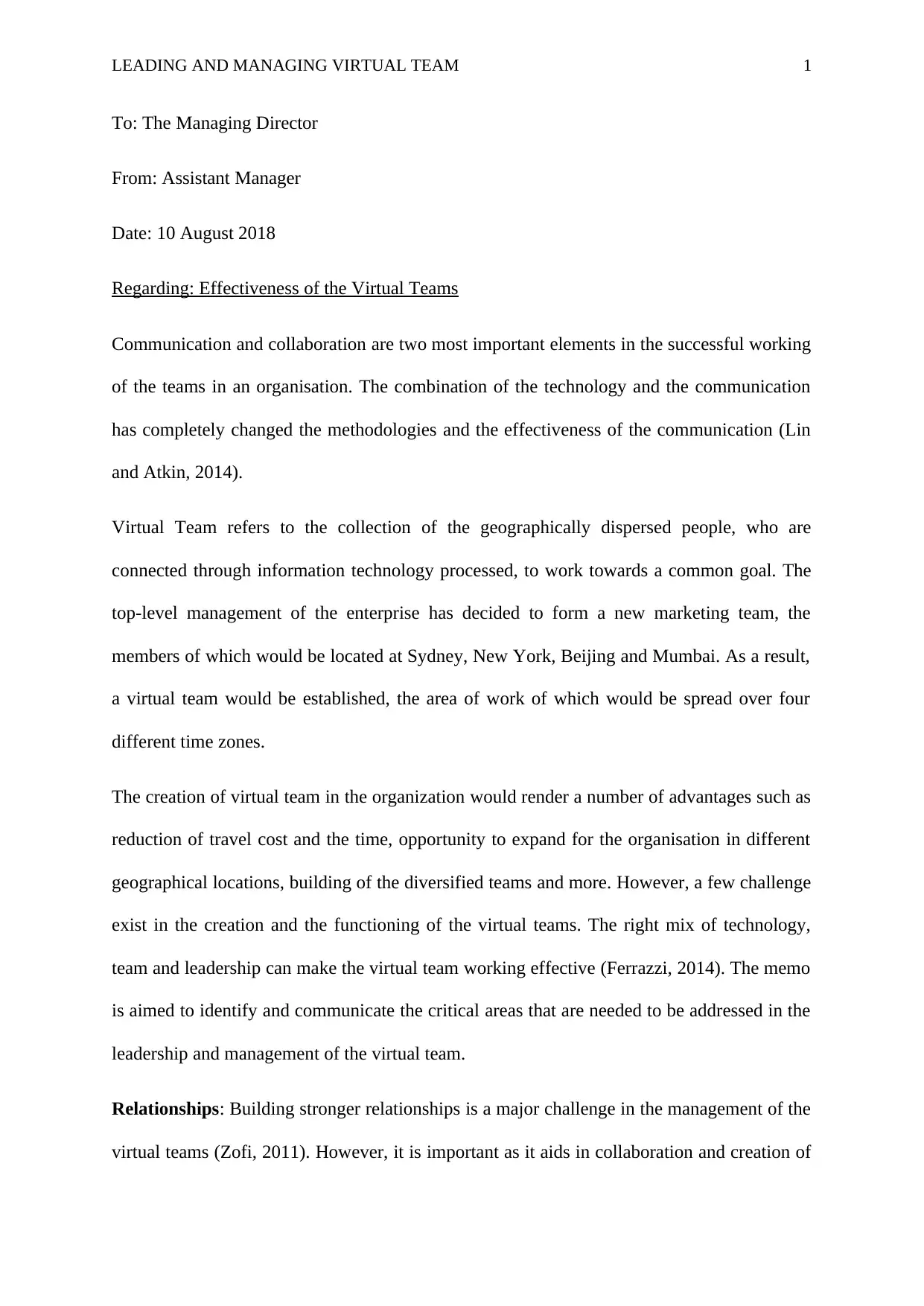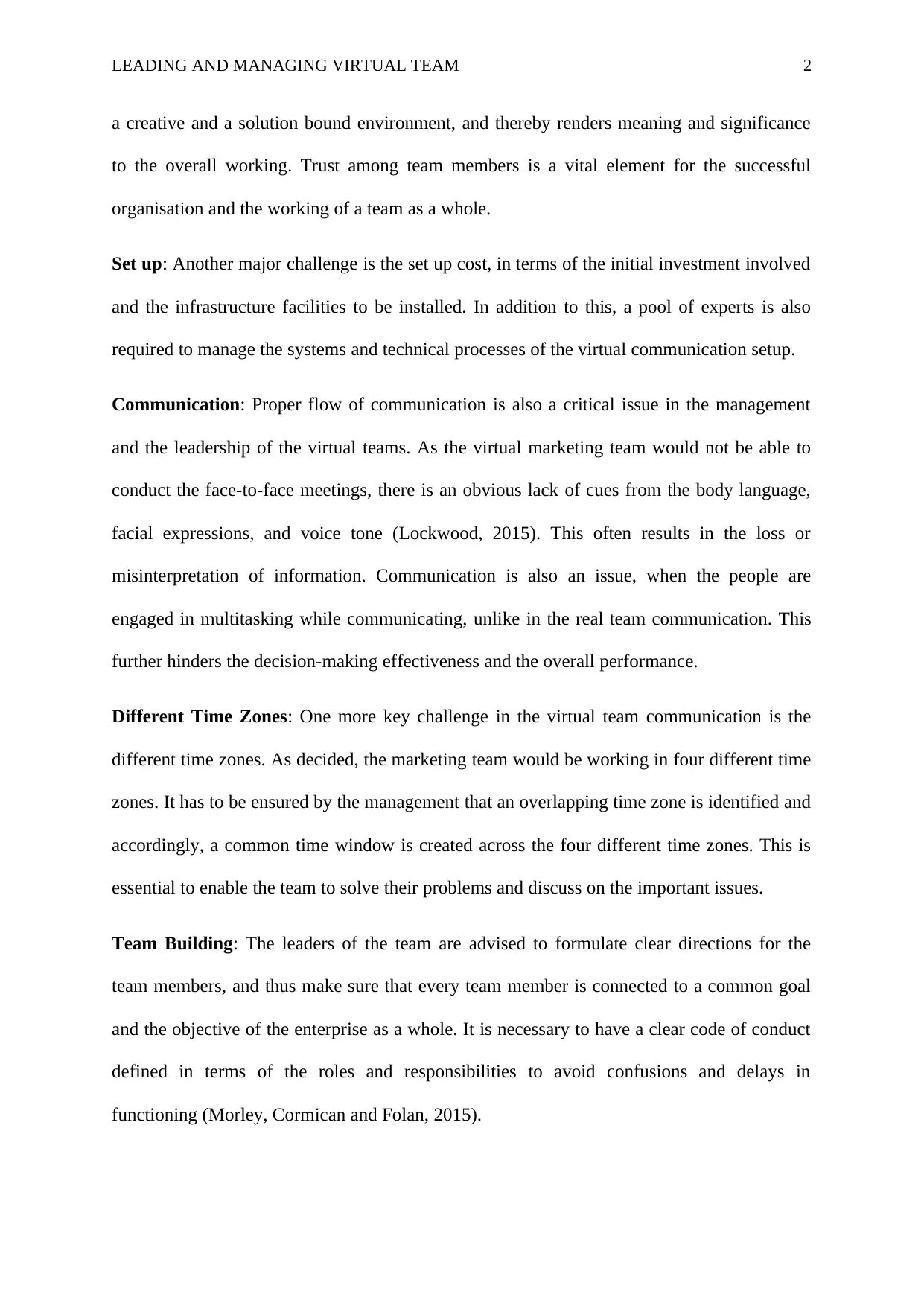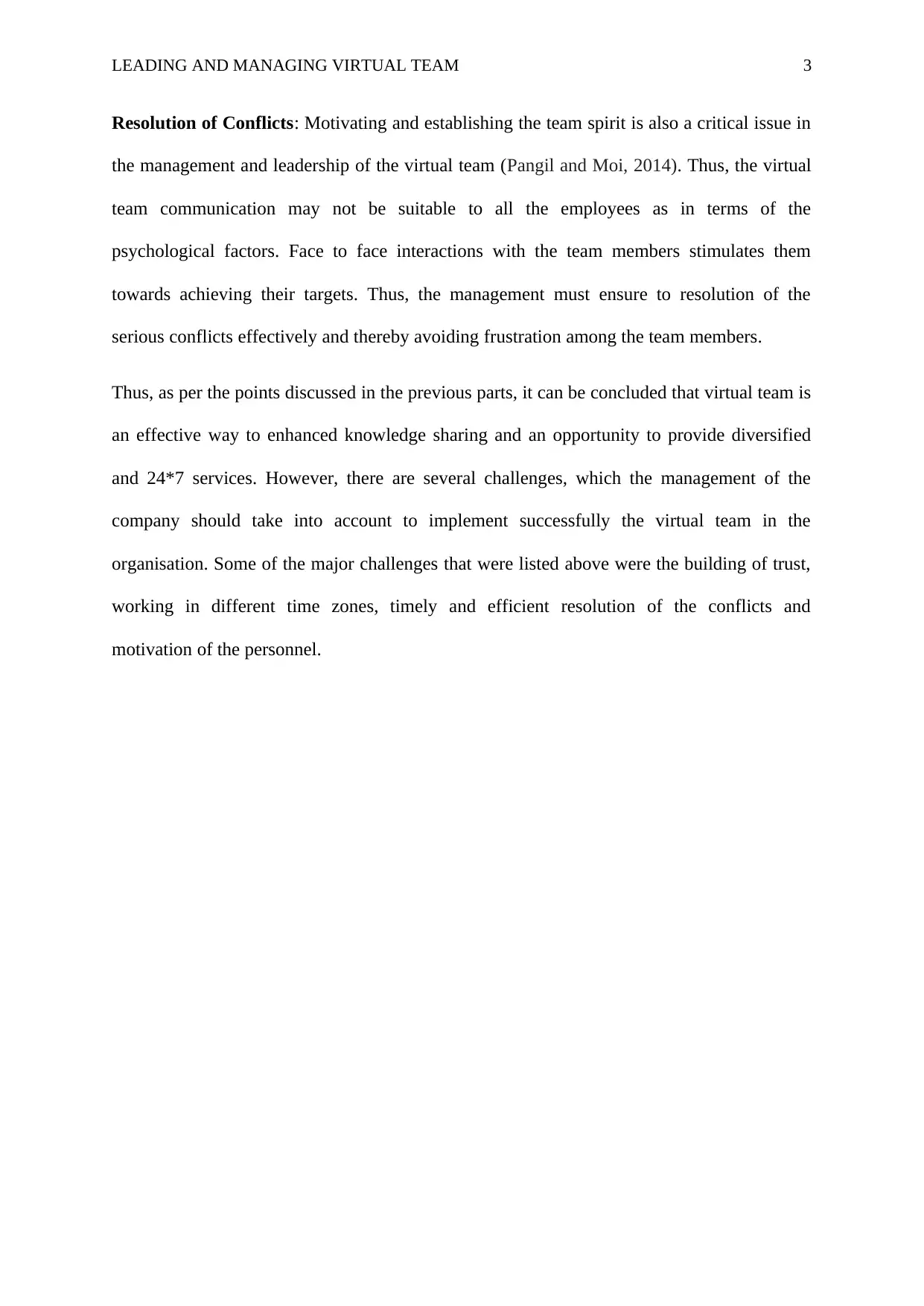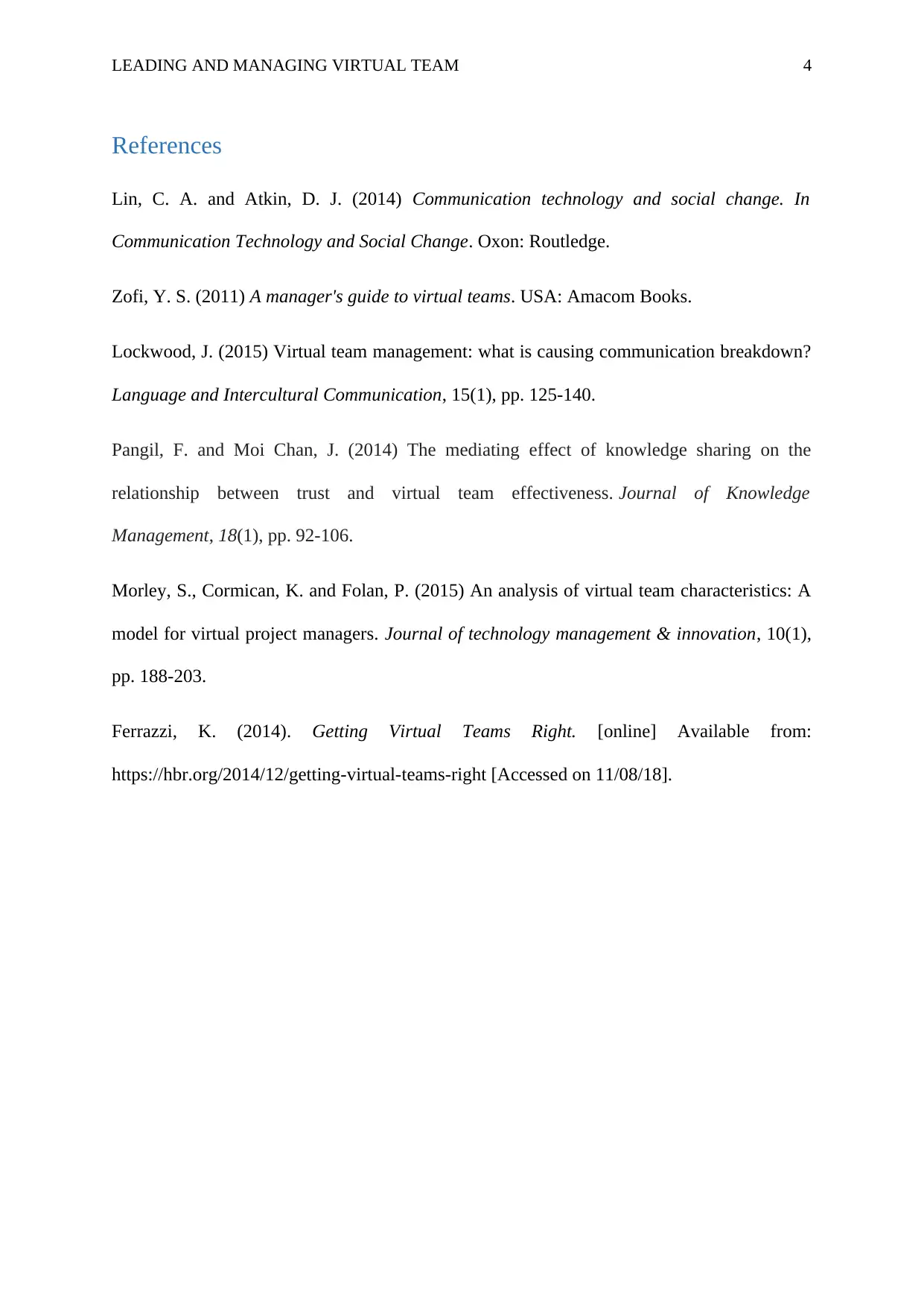Leading and Managing Virtual Teams
VerifiedAdded on 2023/06/08
|5
|1077
|374
AI Summary
This article discusses the challenges and critical areas that need to be addressed in the leadership and management of virtual teams. It covers topics such as building stronger relationships, setting up infrastructure, improving communication, and resolving conflicts. The article provides insights into the advantages and disadvantages of virtual teams and offers suggestions for effective leadership and management.
Contribute Materials
Your contribution can guide someone’s learning journey. Share your
documents today.
1 out of 5










![[object Object]](/_next/static/media/star-bottom.7253800d.svg)